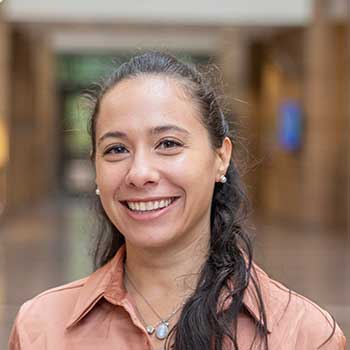
Space Systems
A subset of faculty members in Aerodynamics and Propulsion and Dynamics and Controls develop spacecraft and advanced spacecraft subsystems such as propulsion and control systems. Experimental and computational studies center around spacecraft electric propulsion (EP) systems, such as Hall thrusters. Michigan is developing 10-W EP systems that are small enough to fit on a chip for cubesat propulsion, and 200-kW thrusters that are large enough to drive piloted missions to asteroids and Mars. Cubesats in orbit around Earth are currently used to observe plasmas in the atmosphere that are known to disrupt satellite communication with Earth.
Space Systems FACULTY
Space Systems RESEARCH GROUPS
Michigan Exploration Laboratory
The Michigan Exploration Laboratory (MXL) is directed by Professor James Cutler. The team develops methods to calibrate and optimize sensors and systems on small satellites for space exploration. MXL also investigates whether distributed computing across a global network of small satellite users could allow satellites to deliver more data to earth. Missions include the Radio Aurora Explorer (RAX), which studies plasmas in the atmosphere that are known to disrupt satellite communication with Earth.
Plasmadynamics and Electric Propulsion Laboratory
The Plasmadynamics and Electric Propulsion Laboratory (PEPL) is directed by Professor Benjamin Jorns. PEPL’s experimental and theoretical research program is guided by three goals:
- To make electric propulsion (EP) devices more efficient and of better performance
- To understand spacecraft integration issues that could impede the widespread use of these devices on scientific, commercial, and military spacecraft
- To identify non-propulsion applications of EP systems (e.g., plasma processing, space-plasma simulation)
Experimental and theoretical research is carried out on the development and application of electric propulsion systems, including electrothermal propulsion systems, electromagnetic propulsion systems and electrostatic propulsion systems. The centerpiece of the laboratory is a large vacuum chamber that is 9 m in length and 6 m in diameter and is the largest vacuum facility of its kind at any university in the nation. A full range of measurement, instrumentation and data acquisition equipment supports the facility.
Space Systems Laboratory
The Space Systems Laboratory (SSL) is directed by Professor Oliver Jia-Richards. The current research of the Space Systems Laboratory is focused on the characterization and application of low-power propulsion for spacecraft trajectory design or precision control. In addition, a portion of the laboratory’s research is dedicated to analyzing the feasibility of new space systems concepts.
Selected Project
Nested Channel Hall Thrusters
To improve upon the thruster system power per unit mass of traditional single channel Hall thrusters, a unique nested channel Hall thruster was developed at PEPL. This project studies the performance and plume characteristics of various nested channel thruster configurations to enhance understanding of discharge channel interactions and to study high-thrust and high-Isp modes of operation. The X3, three channel thruster, is the culmination of this effort. This 100-kW class thruster has demonstrated a record-breaking thrust level through a high power propulsion program sponsored by NASA. Learn more on the PEPL website.














